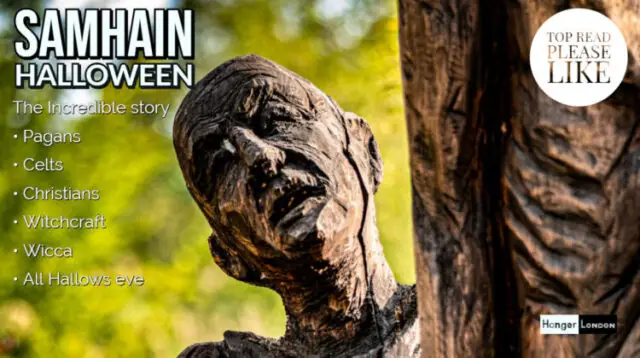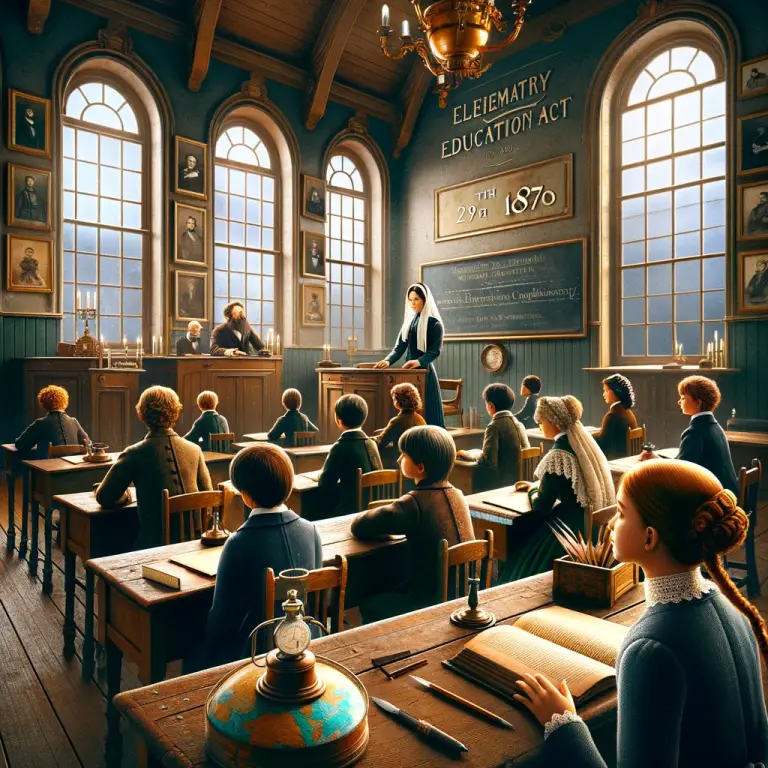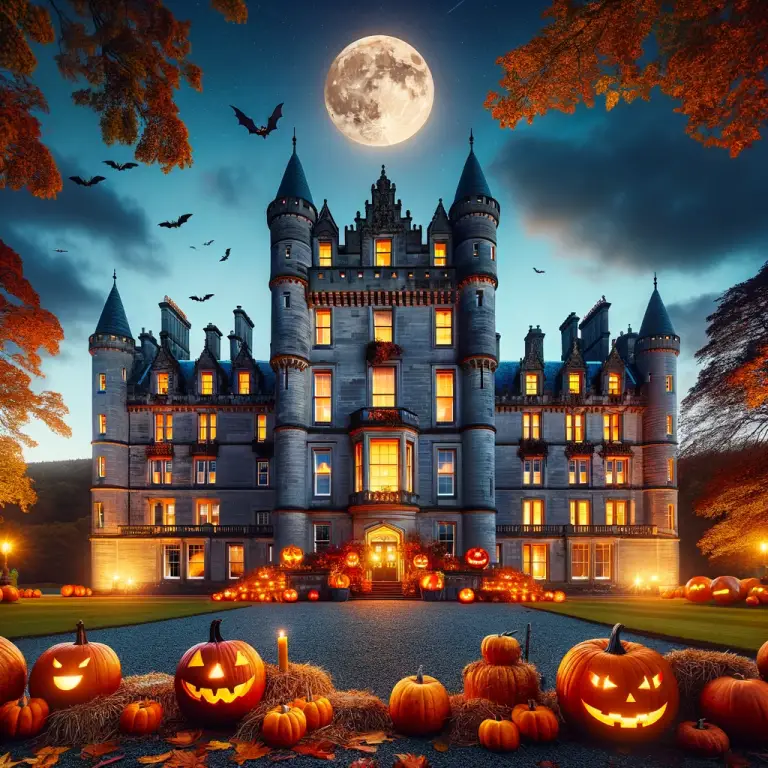Tracing the Roots of Halloween Through History and Myth
As the leaves turn and the air chills, Halloween emerges not merely as a night of frights but as a tapestry woven from the myriad threads of cultures, myths, and traditions that have coloured human history. It’s a point of convergence where the past is honoured and the future is foreseen, where the veil between life and death seems thinnest.
Dia de los Muertos: A Lively Homage to the Departed
In the heart of Mexico, the Day of the Dead blooms like a marigold in the midst of autumn. Día de Muertos or Día de los Muertos is the Mexican holiday associated with the Catholic celebrations of All Saints’ Day and All Souls’ Day, held on November the 1st and 2nd. It is the day of the dead or honouring the dead through festival. The holiday involves family and friends meeting to pray for and to remember friends and family members who have died. It is portrayed as a day of celebration rather than mourning. It was seen that the dead would be insulted if the mood was too sombre, so parties and celebrations were the order of the day. Though Mexico is the origin, it is practised across Latin America. Dia de los Muertos sees death as the natural cycle of life, the one thing that all unites us. Dia de los Muertos sees the dead as still being part of the community, that is what makes the event so unique, waking the dead from their long sleep and sharing the celebrations with their friends and family.
Skeletons clad in festive garb dance in the streets, their grinning skulls a symbol not of morbidity but of a life fully lived. They cavort in humorous tableaux, a joyful poke at the solemnity of death.
The Pagan Legacy
Anthropologists agree pagans were polytheistic, believing in many gods or deities. Respecting the cycle of life and death and spirituality and being at one with nature and the environment. There are modern-day pagans who continue the theme. Many of their traditions spread to the Celts and other cultures and faiths who came after.
The Celtic Influence
The Celts, with their pantheon of nature spirits and deities, celebrated the sacred in the mundane. They saw the divine in the whisper of leaves and the murmur of streams, which they deemed portals to the Otherworld. Their year was punctuated by fire festivals, of which Samhain—our Halloween—was but one.
The Essence of Samhain
To the Celts, Samhain was a hinge upon which the old year swung to make way for the new. It was a day out of time, a crack between worlds where the dead might mingle with the living, and futures could be divined. On this night, respect for the departed was paramount, a reflection of the Celtic belief in an afterlife.
Of Faeries and Phantoms
Within the Celtic imagination, the realms of existence were threefold: the living, the dead, and the elusive in-between, where faeries held sway. These beings were custodians of a delicate balance, resenting the space the living occupied. Their capricious nature was feared; their pranks, a blend of mirth and malice, were the prelude to the tricks and treats of Halloween.
The Fire Festivals
Samhain was a communal affair, where the Celts would gather fuel for monumental bonfires, symbols of unity and rebirth. The fires would blaze anew from a sacred flame, while costumes of gods and ghouls were donned to guide wandering spirits. As the night waned, they carried embers home, nestled in the hollows of harvested vegetables, a beacon of warmth for the winter to come.
In these customs, we see not just the roots of Halloween but a reflection of humanity’s enduring quest to understand life, honour death, and celebrate the eternal cycle that binds them.
Samhain to Halloween: A Cultural Evolution
The Cultural, myths, tales, and history of Samhain Halloween from Ancient Europe through to the Victorians. At this time of the year with the shortening of daylight hours, the season and climate changes, the harvest is complete for another year and the preparation for winter is all but complete. Cultures through time have followed the natural ebb and flow of the seasons of the planet, worshipped and celebrated turning points in the year. Halloween was the start of the new year at one point and a mystical and important time of the year.
What is the meaning of Samhain?
Scottish folk called it Sam hain “Sav-en” and Scottish Gaelic’s Samhain means Summer’s end. Sam Fuin means Hallow Tide feast of all souls. The Welsh say Sow een.
Celts believed that the concept of time could change on the eve of Samhain / All Hallows Eve, our modern-day Halloween. This allowed the living access to the land of the dead and vice versa. For one evening only, a time of the year that existed outside normal time, an exchange of insights about other points in time. That those in the past could help problems in the now.
This culture respected the dead as they believed in life after death. References to paying in the next life.
Samhain is one of the representative festivals of fire
It’s thought Celts went door to door collecting firewood for big bonfires. The fires would then be extinguished and then relit by one symbolic torch that would come from a main or sacred place fire it would reunite the connection of the people. They dressed up as some of their gods and had offerings of food. They also dressed as scary characters on parades leading loose-end spirits elsewhere.
At the end of the night, they took home a wooden ember from the fire and they carried these in hollowed-out vegetables that grew large enough.
The Celtic culture
They had different gods, believed that there were forces in living things like plants and trees and often worshipped them. They believed in life after death and that the gods/ deities lived in the “Otherworld”. Waterfalls were entrances to this otherworld. They followed the seasonal cycles of the year’s growth and decay. They celebrate 4 festivals of fire per year Samhain the start of their year our Halloween Oct 31st. Candlemas, Beltane, and Lughnasadh. But then the equinoxes and solstices are important a Germanic custom which added another four turning points to the year to make 8 in total.
The tales of Faeries, goblins, and mischief
There was the land of the living, the land of the dead and an in-between place where Faeries/ elves monitored. Human interaction was on rare occasions only. Faeries resented living humans for denying the dead space and life and taking up more room. Faeries sneaked about looking for opportunities to sabotage, kidnap humans, play pranks cause chaos. There was the thought some who were sinister would seize humans and not return them. Some of this got played upon by people acting out the myths. Other theories suggest after the work of the harvest this was a way to lark about and celebrate before the long harsh cold winters. Trick or treating In Halloween traditions extend the pranks little elves, goblins would play.
Why do people dress up in masks or scary outfits at Halloween
To deceive the dead spirits from recognising the living, to prevent being found out if playing pranks, to honour gods deities or the dead scare spirits or guide them away.
The Celtic tradition of Apple bobbing
The Celts were not only looking at the past on All Hallows night they were looking to the future. Rituals, divination. Predicting or asking questions about a prospective marriage was a common activity. Female gods and love apples were symbolic of this. Slicing an apple open reveals the pips making a 5-pointed star which like the pentagram a significant symbol also found in witchcraft. Being able to bite into an apple floating in the water was some kind of ritual to do with the prediction of marriage.
Christianity and reinventing the seasonal wheels of the year
In history cultures like paganism, Celts and Romans all started to amalgamate their beliefs. When Christianity started to become more powerful and people converted there were teething problems. The special holidays, customs and festivals of the year from the people who had lived the land were at risk of being replaced. They were being asked to reinvent the seasonal wheel ingrained into them for many generations, in favour of what seemed like a different version of reality.
Like any mergers and takeovers new beliefs, products or customs require a persuasive campaign, to outshine place doubt and dissuade old beliefs. Pagans and Celts did not understand hell and heaven, there was equality among men and women and an afterlife.
Good people went to Heaven and bad, evil people went to Hell, that is just the way it was
The Samhain festival was all about paying respects to the dead but the Christians had a concept of the underworld being hell. Bad people went to hell. The non-Christians had misspelt or mispronounced the word Samhain and were referring to Samael. The trouble with that to Christians Samael became their version of Satan’s head of the underworld, to others like the Jewish faith Samael was an angel of the dead serving god. This twist of the tongue twisted the fate of how this now was all being perceived. Scaremongering went on, controllers reinvented the dead as evil ghosts and out to get people. The Faeries that the Celts had in their belief system relabelled as being neither in heaven with the angels nor in hell with demons more of an in-between stage until judgment day.
Some document and argue that it was during the rising of Christianity, that the concept of Hell with its devil, Satan and the contrast of Heaven and its angels was first introduced. Prior to that, there were no such fears or ultimatums. At the time the spin doctors promoting these new ideas were, on the one hand, wanting all people to convert to their religion and wanting to extinguish non-converters, perceived as trouble makers evildoers or beyond salvation. What better way than to dispel their beliefs as myths and start introducing in their eyes acceptable ways to see things that suited their narrative of control or domination? The fear instilled control, or else suffer the consequences and punishment of murder. Whilst some may blame the Christians for this turn of events as with any form of change it will always bring a revolt no matter who the armies call themselves.
‘All Hallows Eve’ and All Souls’ Day, Days of the Dead
All Hallows Eve was a vigil and preparation evening before All Hallows Day. Initially set up on the 13th of May in the 7th Century. During the 8th C Pope Gregory III changed All Hallows Day to the 1st of November also known as All Saints’ Day. Moving the dates would coincide with Pagan Celt beliefs and they hoped it would bring more pagan Celts into catholic congregations.
As the 10th C came to a close, they set All Souls up on 2nd November so that Christians/ Catholics could pay their respects and honour their dead. Until this point, all Hallows Eve had been a combination of beliefs that added over time to the mystique of the night. Almost as if one could touch base with all past and present faiths in one space of time. Perhaps Mexico has another way to see this they classify All Hallows Eve, All Saints’ Day and All Souls Day as “Days of the Dead” or “Los Dias de Los Muertos”.
So they also exchanged the seasonal Yule for Christian Christmas 25th of December is God’s birthday and the Pagans celebrate Mithra. Easter another pagan Celtic fest was kept too.
Medieval Times of the 5th – 15th Century were tough times
During this time pagans Celts and many beliefs around Samhain were being wiped out.
Halloween and the link to Witchcraft
Since childhood, we learn that people dress up as witches on Halloween, an accepted part of our folklore. We know more about what a witch looks like than we do about why they are part of Halloween.
The pantomime witch that gets reproduced during Halloween perhaps uses the more light-hearted symbolism just like people dress up as skeletons or ghosts or an elf at Christmas. The tall black pointed hat with a wide brim, cape, black cat. Warts and all.
We know that witches practice magic, cast spells, have a broom, and cauldron, and use the symbol of the pentagram. Work with the elements, make potions, and use plants and herbs. Thought to have a spiritual connection or clairvoyant or magical powers. Having a special knife, chalice and altar area. For witches were following the Celtic/ pagan seasonal festivals of the year and so since Samhain started with these front runners, no matter if you respect this or see them as the root of all evil it is universally befitting to dress up as a witch for Halloween which keeps the legends alive.
The two sides of Witchcraft, Healers and black magic
We can split witchcraft into two denominations, those that practice as natural healers, for the greater good of others. Being at one and preserving and respecting the environment being in touch with the elements, seasons and planets. Sometimes also referred to as white magic
In contrast to the other side of witchcraft, what we could describe as black magic, enters the realms of the dark occult and has more sinister associations.
Was hunting for Witches a social preoccupation?
Depending upon what century you lived in, or what religion you followed, one of two things; wise natural healers, or nasty evil sorcerers. The term Witch Hunt is exactly what happened to pagan witches. The perception, all witches were bad, so tortured, burnt and eradicated. This was happening to thousands from the mid-1400s to around the 1660s.
In 1486 the book “Malleus Maleficarum” translated as “The Hammer of Witches” by German authors was a manual on how to hunt witches. Germany had one of the highest statistical rates of witch execution. This book sold for 100 years and was very popular. Christians and Catholics at the time were anti-witch.
Some might say but what evidence is there to show that these people were being culled in mass? In USA 1647 Alse Young was the first person executed for witchcraft. Hatred spread to other parts of the USA it was not just Europe, Germany had one of the highest rates of Witch culling.
A legal trial in 1692 in the USA “Salem Witch Trials”, concerned the case of children who were displaying chronic symptoms and thought to be victims of witchcraft. Other people contracted these symptoms, and it’s now thought to have been the poison of a fungus life had exposed them to. 150-odd people were executed by this misjudgement.
A Famous witch Grace Sherwood 1706 Virginia USA to a water drowning test to determine if her special powers would save her or not. Unfortunately, the tied-up woman didn’t sink so failed the test sentenced for being a witch, but spared life by serving a jail sentence. American laws differ from state to state Virginia, already realised by 1655 that they needed a law to prevent false witchcraft accusations. By the 1730s it’s speculated the article by Benjamin Franklin criticised the lunacy of some accusations and by around this time, things started to change to protect people and their innocent beliefs.
The meaning of ‘Wicca’
The old English word for witch is “Wicca”.
Wicca is an official religion in the USA and Canada although there are many disciples all over the world. The motto is “Harm none”
In the 1940s that word was now being used to describe witchcraft, by British-born Gerald Gardner who was the pioneer that brought modern pagan witchcraft into being known as Wicca and was a Wiccan himself. He was an author and an able anthropologist, an archaeologist.
A case study The European Witch Hunt c. 1450-1750 and Witch Hunt Today Gendercide Watch refers to the fact other continents and modern-day witch hunts still happen.
The Christians’ view of Witchcraft
The Bible in book 1 Samuel refers to witches 931 B.C -721 B.C King Saul looks for Witch Endor to help summon the spirit of the dead prophet Samuel to help the king defeat the Philistines.
Exodus 22:18 “Thou shalt not suffer a witch to live”
They associated witchcraft with the devil and those who practised the craft would not enter heaven. Engaging in witchcraft, they believed exposed people to demonic influences where Satan took control. Many people have blamed or documented this as being a Christian belief and that they were the route of all evil to eradicate witches.
Bible references to witchcraft
There was no ability to see the black from the white witchcraft, it was all perceived negatively. Perceptions and beliefs were influenced by how the Bible was being interpreted.
Here are some bible quote sections that mention Witchcraft
Galatians 5:19-21
Lists of negative traits such as impurity, hatred, jealousy, murder, and Witchcraft are amongst it and the point “that people who practice such things will not inherit the kingdom of God”
Deuteronomy 18:10-13
Do not let your people practice fortune-telling or use sorcery or interpret omens or engage in witchcraft or cast spells or function as mediums or psychics or call forth the spirits of the dead. Anyone who does these things is detestable to the Lord.
Micha 5:11 -12
“I will tear down your walls and demolish your defenses, I will put an end to all witchcraft and there will be no more fortune-tellers.
Leviticus 19:26
Do not practice fortune-telling or witchcraft
Michal 3:7
Those who practice witchcraft will be disgraced……god won’t answer them
Leviticus 20:26-27
Men and women among you who act as mediums or who consult the spirits of the dead must be put to death by stoning. They are guilty of a capital offence
1 Samuel 15:23
Rebellion is as sinful as witchcraft
1 Chronicles 10:13-14
Saul died because he was unfaithful to the Lord, he even consulted a medium instead of asking the lord so the Lord killed him
2 Kings 9:21-22
How can there be peace as long as the idolatry and witchcraft of your mother, jezebel are all around us?
2 Chronicles 33:36
He practised sorcery, divination, and witchcraft he did much that was evil in the Lord’s sight.
Demons
1 Corinthians 10:21
you cannot drink the cup of the Lord and the cup of Demons you cannot partake of the table of the lord and the table of the demons.
Revelation 9:20-21
They continued to worship demons and idols made of gold silver bronze stone and wood idols that could neither see nor hear nor walk and they did not repent of their murders or their witchcraft
Revelation 18:23
For by thy sorceries were all nations deceived.
Isaiah 8:19
Refers to not using mediums or people who consult with spirits of the dead and instead seek guidance from good not from the dead.
The 1500s and the Origins of Soul Cakes
Lisa Morton’s book “Trick or Treat” states that Soul cakes or soul mass cakes existed for All Souls’ Day as early as 1511. A dough-type biscuit or cake with currants. Children would go out “Souling”, begging for these cakes from door to door. Perhaps elements of trick or treating for sweets stem from this. Pacified children, sang well wishes to the cake givers. Prayers and hope for the deceased relatives.
Shakespeare’s play Hamlet written in 1599 makes reference to an eve like Halloween.
Hamlet’s Soliloquy: Tis now the very witching time of night (3.2.380-391)
Annotations
Tis now the very witching time of night, (380)
When churchyards yawn and hell itself breathes out
Contagion to this world: now could I drink hot blood,
And do such bitter business as the day
Would quake to look on. Soft! now to my mother.
O heart, lose not thy nature; let not ever (385)
The soul of Nero enter this firm bosom:
Let me be cruel, not unnatural:
I will speak daggers to her, but use none;
My tongue and soul in this be hypocrites;
How in my words soever she be shent, (390)
To give them seals never, my soul, consent!
What are Jack-o’-lanterns and their connection to Pumpkins?
In Ireland, the term jack o Lantern was in use because of the legend of Jack a miser who tricked the devil on All Hallows Eve by luring him up an apple tree. He marked the trunk with cross marks that the devil couldn’t cross it trapped him in the tree. The Devil negotiated that if Jack released him, he would leave Jack alone. Heaven did not want Jack when he died and the devil had already washed his hands off of him and kept the promise, so Jack was stuck as a spirit at a loose end and neither in hell nor heaven. The devil threw him an ember of wood by the devil to help light his pathway. He carried the wooden ember in a hollowed-out vegetable like a turnip that glowed, much like our pumpkin lanterns in modern times.
When the Irish emigrated to the USA from around the 1820s onwards, they bought the tradition of vegetable lanterns with them. Pumpkins were seasonally more available in the United States of America and easier to hollow out. Glowing lanterns, function to ward off mean spirits and guide the way for dead souls.
18th C Poets mention Halloween
Robert Fergusson in 1772 wrote “Hallow –Fair” Hallowmas Fair held on 1st Nov
John Mayne’s 1780, poem “Hallowe’en” demonstrates that Trick or Treating is a Scottish tradition much before the Americans popularised it.
Poet Robbie Burns from Scotland wrote the poem “Hallowe’en” 1785 published 1786
http://www.robertburns.org/works/74.shtml
Burns refers to the pranks, partying the harvest the implication that anything might happen on this unusual night.
John Keats the poet was born on Halloween 31st October 1795 It was not till 1818 that Keats wrote Tis the Witching time of night.
Halloween in the Victorian Era 1837-1901
Balmoral Castle celebrates with an annual Halloween fire
Christina Rossetti’s “goblin market” poem 1862
John Kendrick Bangs “Halloween” poem – 1919
TO BE Continued – Bookmark or follow to get the next chapter……..




